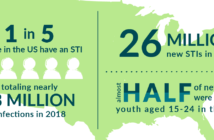Suspects that are arrested are given a set bail. Bail is the amount of money, or assets, the suspect will have to deposit or pledge to the court to be able to leave jail. A bail is to ensure the suspect will show up for their trial, otherwise they will forfeit their bail. If the suspect cannot pay the bail then a bail bond agency may offer to pay the bail for a non-refundable fee. Some problems may occur with this; however, when the suspect flees. The bail bond agency will typically hire a recovery agent, bounty hunter, to legally arrest the missing suspect.
Brain Johnson and Greg Warchol say in their article Bail Agents and Bounty Hunters thatbail itself is believed to have originated from practices known as hostageship, wergeld, and surety. The Romans had a system of surety from around 700 B.C. in which a third-party would vouch for the an individual who was taking out a loan and that if the individual could not pay it back, the third-party would have to repay the loan instead. Hostageship was a practice in which a willing hostage submitted his or herself in place of the suspect and should the suspect not show up for their trial then the hostage would be tried in their place. With wegeld, a medieval practice, the suspect who defaulted on their loans had to demonstrate that they could compensate the lender if they are convicted. With bail and the businesses that provided bail bonds came bounty hunters who enforced the whole process. These bounty hunters have had a long history with the law, and in some cases with religious law.
Take John Mullowney, or as he is more commonly known, John of the Priests, for instance. John of the Priests was a Catholic Priest hunter hired by the Grand Jury in Ireland. He did not actually have much of choice for his career; he had the choice of either becoming a Priest Hunter or hang for stealing horses. Priest hunters were a common type of bounty hunter in the 1700s because of the 1709 Penal Act that had been passed. Priests had to take an Oath of Abjuration and if they did not they would be sentenced to death. The priests who ran or continued to refuse were hunted by men like John Mullowney.
In the United States of 1863, Thomas Tate Tobin was the most famous bounty hunter of his time. According to the History Channel, Thomas Tobin was an ex-US Army scout, mountain man, guide, adventurer, and trapper. During 1863, the Espinosas, three cousins, went on a killing spree in Colorado for what they felt were the wrongful deaths of relatives who were killed in the Mexican-American War. When authorities were unable to capture the three men they called in Tobin. Tobin had been given fifteen men to assist him in his hunt, but he ultimately went alone. Tobin returned later with a sack that contained the severed heads of the three Espinosas.
Another great bounty hunter of the 1800s was Patrick Floyd “Pat” Garret. He is known mostly for his hunt of William Henry McCarty, Billy the Kid, and his gang of outlaws. William Henry McCarty was an old acquaintance of Garret from the days when Garret owned a saloon, before he had been appointed as the new Lincoln County sheriff in 1880. Garret was known for his quick shot skills with a gun, which he acquired while working as a cattle gunman on a Texas ranch. Over the years Garret continued to hunt down Billy the Kid and his gang, slowly whittling down the members by either arresting them or killing them. Eventually, it came to be just Garret and Billy the Kid until one night Garret was able to corner the last outlaw and kill him. It is also theorized that Garret did not kill Kid in the end, but instead helped orchestrate his escape by faking his death, since there are some hints in history that the two had been former friends.
Steven McQueen’s final movie “The Hunter” was based on the life of bounty hunter Ralph “Papa” Thorson. Astrological charts were one method that Thorson employed to track down criminals. He also used a gun that he designed himself which fired buckshot-filled beanbags at the criminals he was hunting down. The arrests of over twelve-thousand criminals are attributed to Ralph Thorson. It is presumed that one of the twelve-thousand fugitives that he helped put away killed him in 1994 using a car bomb.
A famous female bounty hunter was one Domino Harvey, born to actor Laurence Harvey, and model Paulene Stone. Domino Harvey first started a career in modeling before moving to the United States where she tried to apply to the Los Angeles Fire Department. She then enrolled in a course to become a bail recovery agent, the new form of bounty hunters. Harvey primarily went after drug dealers and thieves and was so good at her job that she typically earned $40,000 a year. However in 2005, Harvey died of a drug overdose due to an addiction.
New state laws and regulations restrict bail recovery agents more than ever, however they are still less restricted than official authorities, such as local police. The National Conference of State Legislatures states that twenty-two states now require professional recovery agents to have licenses and complete certain training courses. Another fifteen states, such as Georgia, require that recover agents identify with bail bond agencies or a particular bail bondsman. Nine states simply require that recovery agents wear a certain attire while in the process of tracking down a fugitive. There are also laws recovery agents must follow if they want to enter a dwelling. These laws differ from state to state. Nowadays, recovery agents can make up to ten percent of the initial bail that had been set as payment.




